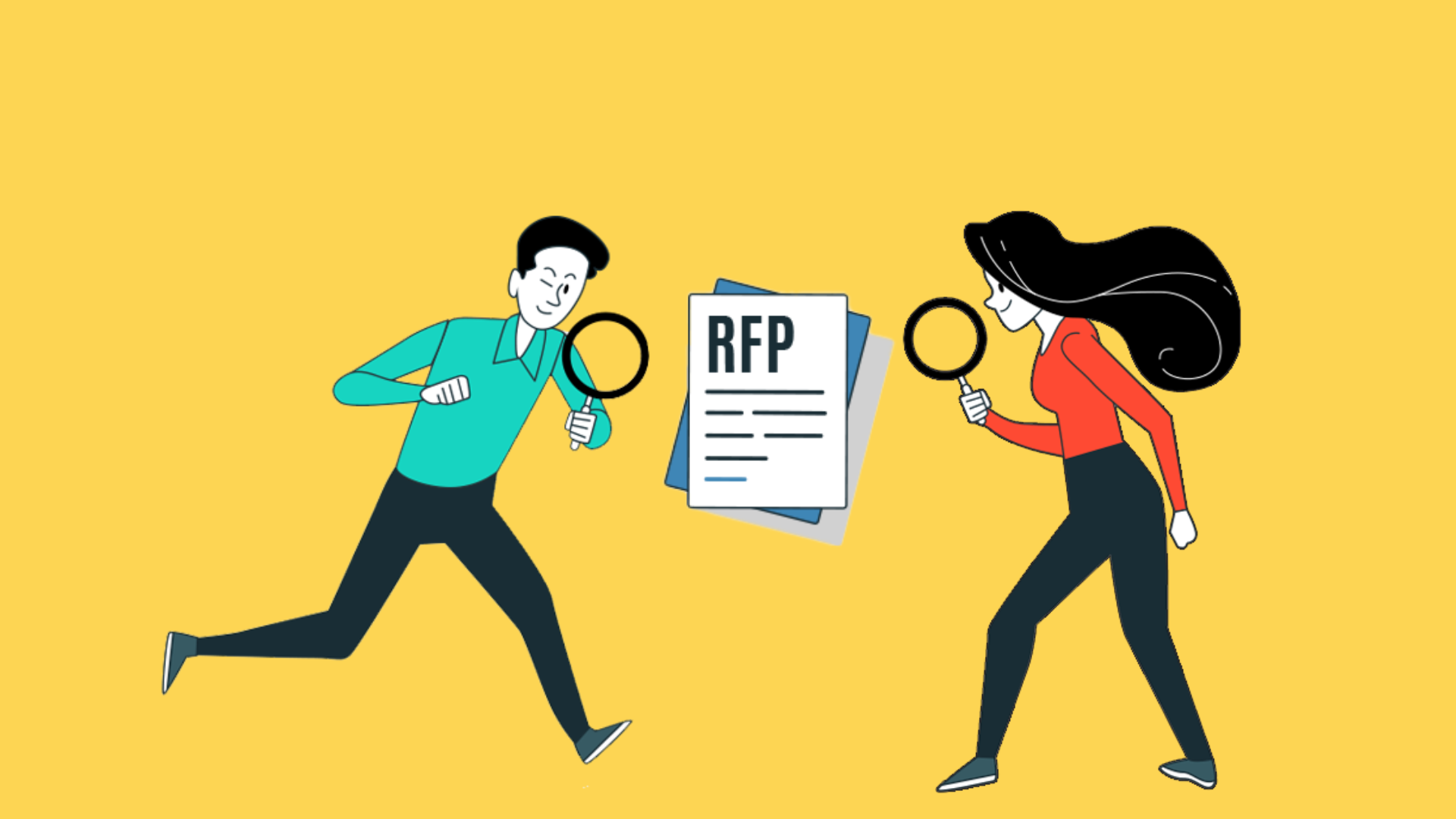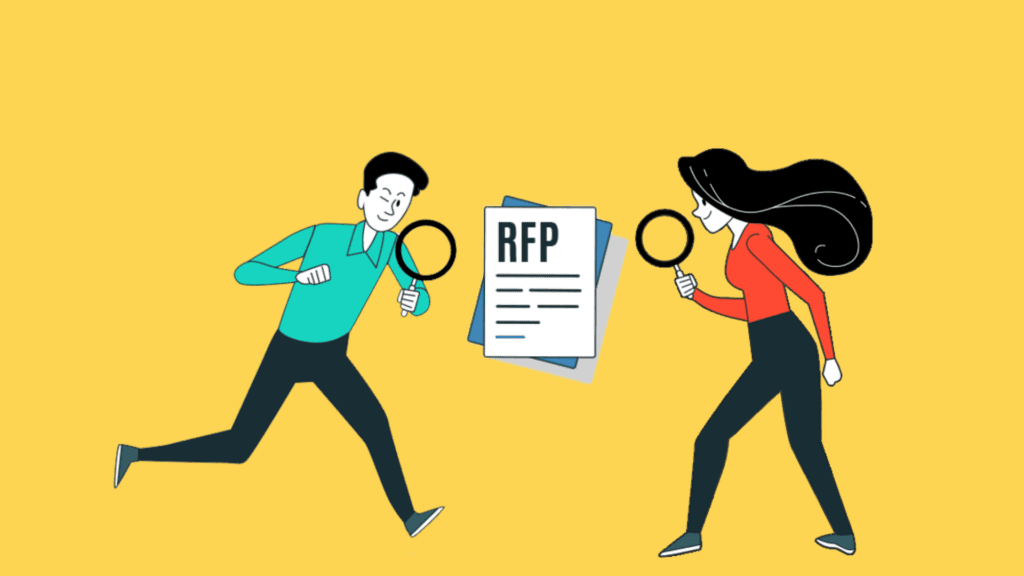What Is an RFP?


How do you begin to understand a complex document like a Request for Proposal (RFP)? Do you immediately jump online and search the term? Do you ask colleagues if they have any past experience working with RFPs? Or, do you break down at your desk, move the RFP to the side, and quickly move on to something easier?
If you’re reading this, you’re likely one of the people who starts with an online search of What is an RFP? If you’re considering issuing an RFP or responding to one, it’s helpful to understand the process from both sides of the table — or, in this case, document. In this article, we’re breaking RFPs all the way down so you can make strategic decisions when it comes to creating your next RFP response.
Exactly What Is an RFP?
A Request for Proposal (RFP) is a business document. Organizations publish RFPs to solicit proposals from potential vendors for a particular project solution. The RFP specifies what the entity is looking for and describes the criteria for evaluating the proposals it receives.
Government organizations ranging from local to federal agencies, as well as large private companies, all issue RFPs to ensure transparency. Public entities, by law, are accountable for project goals and vendor choices when using taxpayer money (like yours!).
On the other hand, private organizations operate in the competitive business sector. This means their purchasing activities are confidential in most cases. Furthermore, they can choose bidders based on their own criteria, as their selection isn’t subject to as much regulation and scrutiny.
Public and private entities each have unique demands in the RFP space. For both bid issuers and responders, it’s important to know how each can impact your work differently. Deep dive into understanding the differences between public vs. private RFPs to stay compliant with each one.
What Are the Benefits?
The goal of issuing an RFP is to find the best vendor for the best value — while also minimizing risk. When written properly, the responses should help the issuing entity:
- Understand project solution options. RFPs help facilitate more informed buying decisions by allowing entities to compare many different bids. Rather than seeing just one solution, responses may present different ways of approaching the project. This can highlight more comprehensive and sustainable solutions that the issuer may not have previously considered.
- Easily compare vendors’ experience. RFPs include strict formatting guidelines to save the procurement team time researching each bidding company. Furthermore, they’re created with qualitative and quantitative metrics to evaluate each responding company. Evaluation factors include experience level, technical solutions to the problem and anything else deemed important to fulfilling the project’s goals. Typically, formatting guidelines are strictly enforced. This is to ensure the procurement team can find and compare data from each response in a timely manner. Failure to comply with formatting guidelines will likely lead to elimination from the selection process.
- Increase the competition between vendors. For issuers, more competition in the pool of responses increases the likelihood that they’ll also receive the best pricing. For vendors, we like to make it clear that the lowest bid doesn’t always win the contract. In fact, vendors who may offer a better overall value (for example, utilizing higher-quality project materials) have a stronger likelihood of winning the contract. RFPs allow issuers to compare pricing and value metrics to make sure they work with the right vendor — which may not always be the cheapest one!
Who Prepares the Documents?
RFPs are complex documents filled with legalities, technical information and pages of (sometimes redundant) questions. This is because RFP content is often compiled from several stakeholders within an organization. Some of the stakeholders that make up each required section of an RFP are:
- Subject Matter Experts (SMEs): SMEs are commonly defined as individuals who exhibit the absolute highest level of expertise within an organization for a specific role or task. Complicated or heavily regulated industries require the expertise of SMEs to provide guidance on the scope of work required to achieve the project.
- Finance: As RFPs tend to be tied to costly projects, for budgetary reasons, RFP teams consult with finance departments to set strict project deadlines. Because the finance team will account for outside cost factors, such as inflation, it’s important to involve them in the RFP process.
- Legal: Final RFPs are awarded to vendors via contracts. Therefore, to protect the issuing organization, legal departments must ensure that RFP requirements account for contractual obligations.
- End Users: End User input is vital in making sure the vendor is aware of how the project will impact their daily operations, along with how it will function among outside departments or users.
- Procurement: This team has the greatest responsibility for making sure the RFP includes each stakeholder’s requirements, as well as for completing the RFP preparation on time and on budget. Procurement teams manage every contributing factor of an RFP.
It’s commonplace for RFPs to ask the same question multiple times or in multiple ways. This isn’t an oversight! A single answer may be important for different departments to evaluate that section of the proposal. In brief, always answer each question as if it’s the first time you’re seeing it because more than one person will be evaluating your proposal.
What Are the Other Types of “Request For” Documents?
How do we avoid confusion during the RFP process?
First, it’s important to know the acronyms for other request documents. Here’s a quick rundown:
- RFI: Government entities often use a Request for Information (RFI) when solutions aren’t immediately apparent. Therefore, an RFI is published to gather problem-solving information from potential vendors. Afterward, the entity will review the proposed solutions and decide whether or not to issue an RFP. Vendors won’t provide much specific information when responding to an RFI. However, you still want to respond with enough detail to sell the entity on your solution. This way, if it does publish an RFP, you’ll already be a strong contender.
- RFQ: A Request for Quote (RFQ) isn’t as open-ended as an RFP. The issuer has already decided the quantity of products or services they need to fulfill their project. So, companies solicit multiple price quotes from various vendors to compare services based on price alone. An RFQ doesn’t detail anything other than the price.
- RFT: The government commonly issues a Request for Tender (RFT) when the requirements of the project are $25,000 or more. Similar to RFQs, RFTs help procure the most cost-effective solution. However, they also allow the buyer to make decisions based on other evaluation criteria outlined within it rather than basing a decision strictly on price.
- IFT and ITB: An Invitation to Bid (ITB) or Invitation for Bid (IFB) is a call for contractors to submit a proposal for a specific product or service that an organization knows it wants/needs. While it’s related to RFPs, an ITB is usually more price-focused and typically involves a more streamlined bidding process.

What’s in an RFP?
Now that you know what an RFP is, you’ll also know what to expect from other types of RFP request documents. It’s important to understand the basic ingredients of the document itself.
- Project Overview: As a responder, the project overview should be your first “go-to” to verify if the project is right for your business. Within this section, issuers will write a brief description of the RFP’s purpose. They’ll also state what they expect bidders to do and why. As a responder, you should be able to identify their “pain point”, and if you can resolve it for them. Having trouble finding a strategic RFP? The Bid Lab can help.
- Company Information: RFP issuers provide background information about their company, what it does, what its values are and what makes it unique. However, this doesn’t negate taking extra steps to get to know the company further through online research. Rather, use this section as a stepping stone to evaluate its standing.
- Scope of Work (SOW): The SOW describes what the procuring company is looking to achieve as a result of the RFP. It establishes the parameters of the possible resulting contract. It should also contain an overall timeline detailing any milestones, reports, deliverables, and/or end products. For vendors, it’s important to ensure that your business can deliver the listed SOW requirements.
- Vendor Evaluation Criteria: The RFP evaluation criteria is a set of standards that score the vendor’s proposal. As Small Business explains, “The main objective of this area is to minimize human emotion and political positioning to arrive at a decision that is in the best interest of the company.” As a vendor, your bid is evaluated the same way as your competition. So, before you hit submit, check your response against the evaluation criteria.
How Do I Submit?
- Submission Timeline: Pay special attention to the submission timeline. If your business cannot deliver the response by the required date, then there’s no need to move forward. However, if you can respond thoroughly and on time, review this section in detail. It may include pre-proposal conferences or Q&A periods that your business can take advantage of. The more your business participates, the better chance it has to deliver to the client’s needs.
- Submission Information: After considering whether or not you can meet the submission deadline, you also need to consider the requirements for submitting the proposal. Some RFPs require multiple printed copies and submission via the postal service. Others require a simple emailed PDF. It sounds silly to have to fit this into your schedule, but when your printer breaks, and you need to slot in a trip to Staples before heading to the post office before 4 PM on your busy Tuesday afternoon, you’ll thank us for having prepared well ahead of time.
With this information under your belt, you should now know how to begin digesting the ingredient-packed RFP. Always keep in mind your overall business goals and strategies, as this will play an important part in selecting the right RFP to respond to. With little time to waste in our fast-paced business world, the more prepared you are when finding the right RFP, the better your business will benefit from allowing enough time to respond to it. Learn what process works best for you, and refine it as you go along.
You Don’t Have to Go It Alone
While every RFP is different — varying in length, requirements, submission details, etc. — the more you respond, the more confident you’ll be with each new RFP opportunity that presents itself. Now that you have the answer to “What is an RFP?”, learn a few tips and strategies about where to find RFPs, or get to know the difference between RFPs vs. RFIs. As a bonus, here’s a list of 10 RFP Facts That Will Help You Win More Bids. Need an RFP terminology glossary? Click here to view the RFP industry glossary acronyms. Or, feel free to browse our entire Learning Center.
Our goal here at The Bid Lab is to help you gain the knowledge to find and respond to the RIGHT RFP. If your business is seeking professional consultation with respect to responding to RFPs, our bid experts are here to help you understand the proposal process in its entirety. Start by giving us a call at 1-844-4BIDLAB or emailing respond@thebidlab.com. Let’s make your next RFP experience an informative and positive one!
